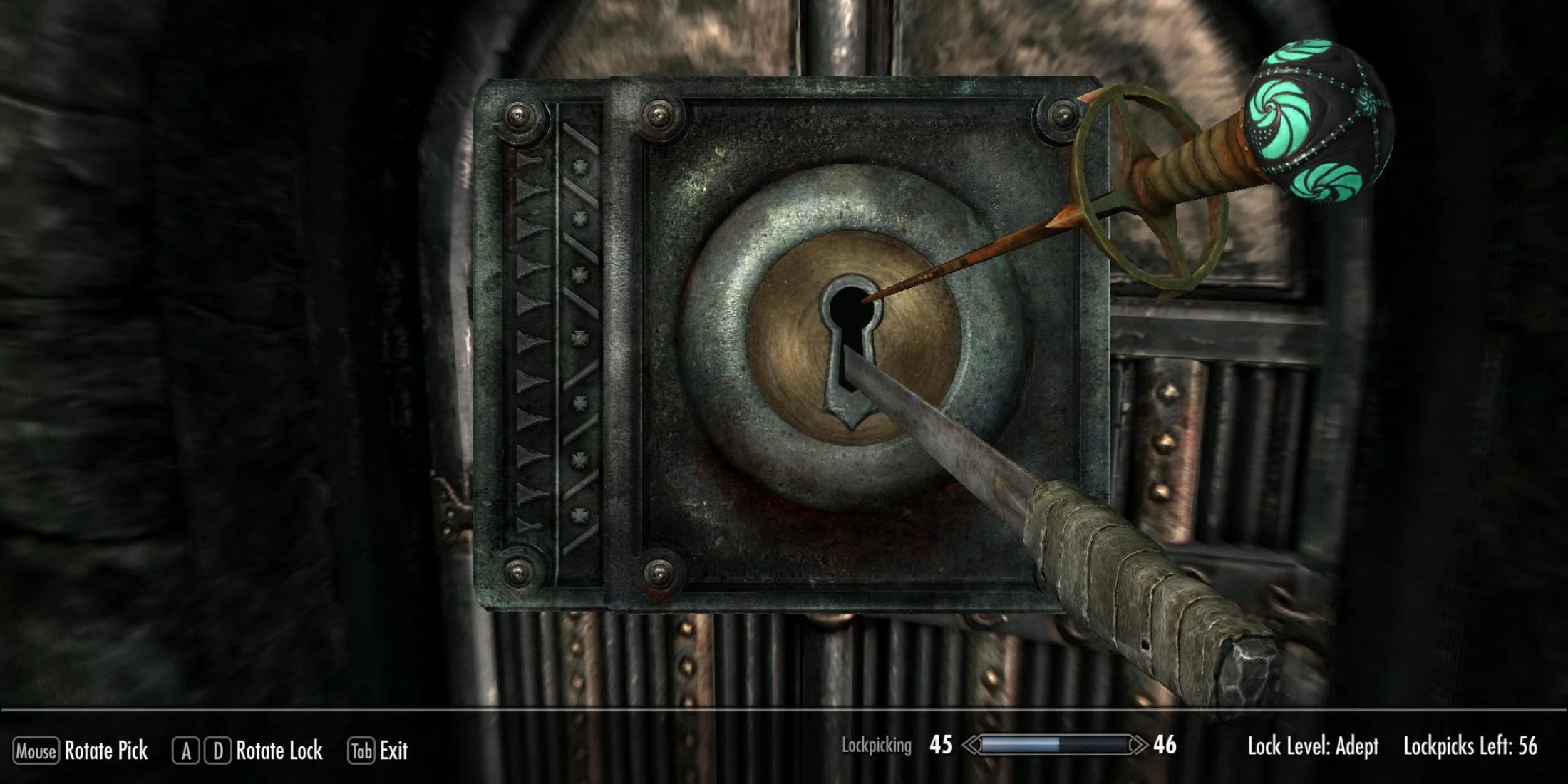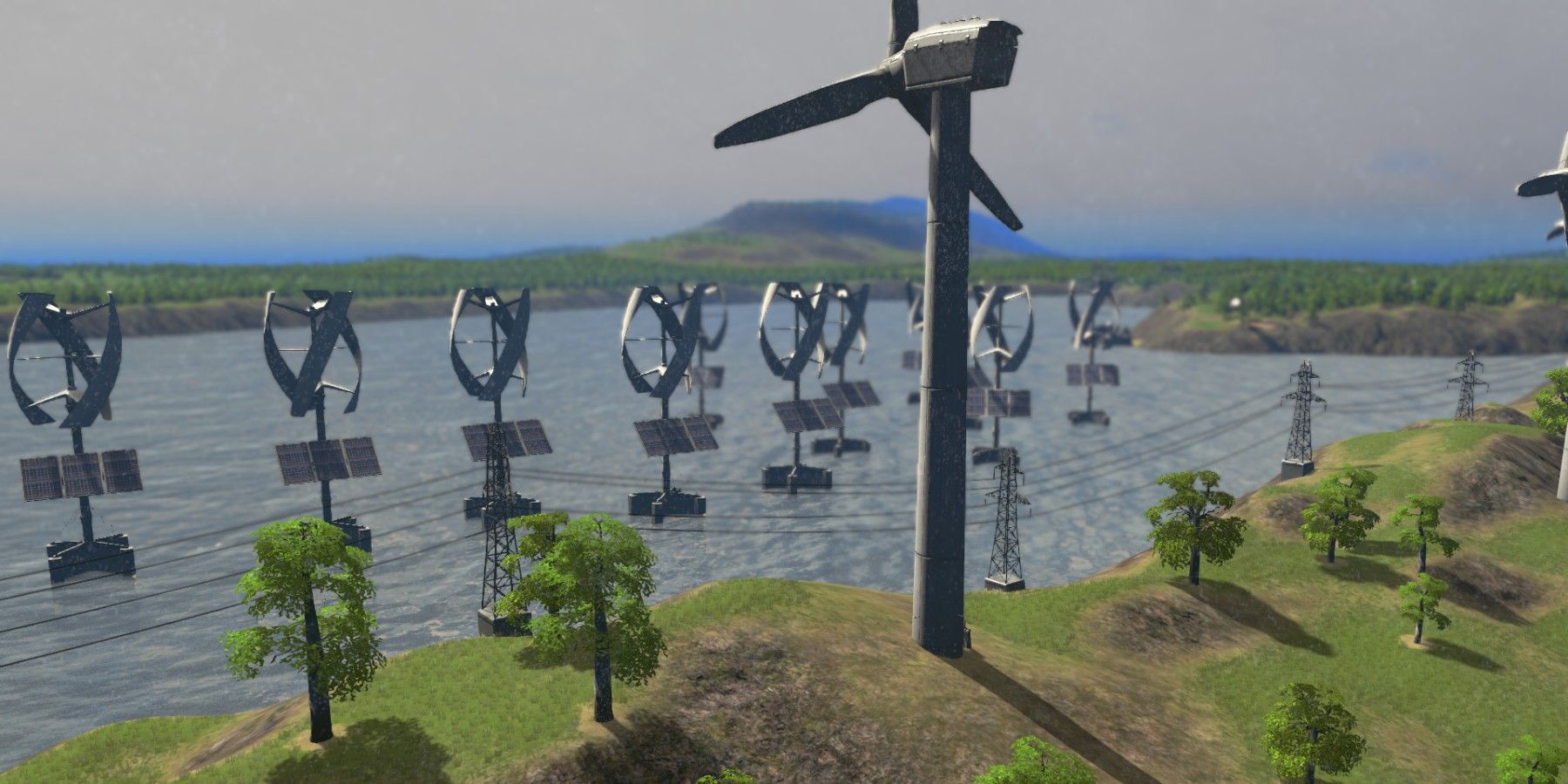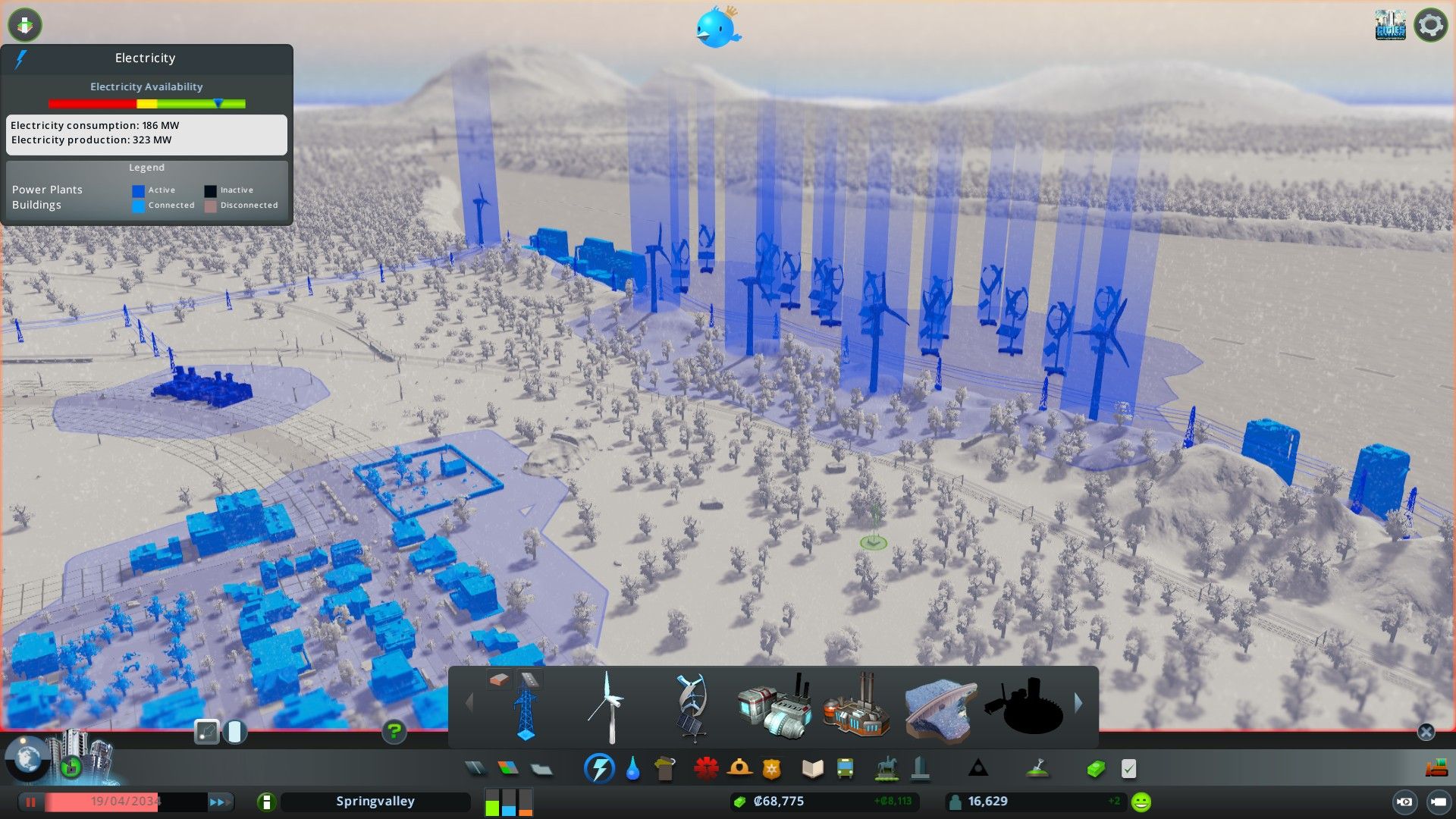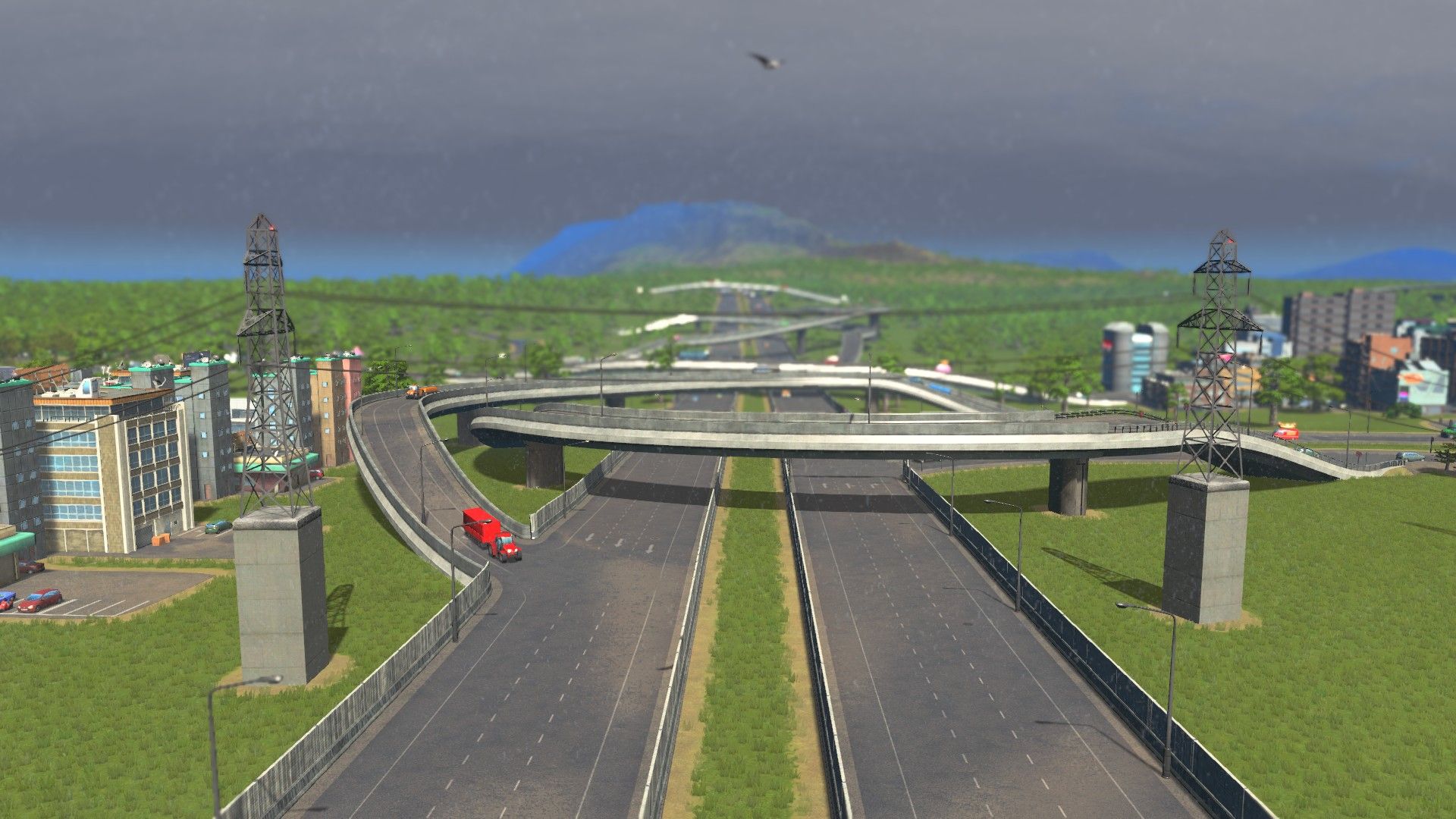The first two services players have to provide in Cities: Skylines are power and water. Water connections are obvious in how they work: players draw underground pipes across the landscape, and every building close enough to the pipes can get water and remove sewage.
However, power works a little differently. While players can connect power stations and windmills by placing power lines nearby, they don't always have to. This is because buildings in Cities: Skylines make their own power connections, and so long as there are other powered buildings nearby then a power line isn't necessary. This ability can make powering a city much easier, but it can also lead to headaches as players try building in new areas.
The Power "Aura"
When players select "Electricity" in the build menu or the info view options, they'll see that every source of electricity and every powered building has a blue "aura" that covers a lot of the ground surrounding it. If two buildings are close enough for their auras to overlap, then the buildings can transfer power between each other without needing any power lines. This transfer can happen across small gaps and wide roads, and so players can power an entire downtown district without a single power line by placing a coal power plant at one end.
Of course, one problem with this is that players can't choose where and when zoned buildings go up. This can make it awkward when a neighborhood runs out of power because the business at the street corner goes out of business. Thankfully, though, the game is aware of this issue and zoned buildings tend to go up next to the power connections first.
Placing Power Lines
Players may not need to use power lines to electrify their cities, but there are still some good reasons to use these connectors.
The first reason is pollution. Industrial zones and most power plants generate a lot of pollution, and players will want to keep them as far away from residential areas as possible. Not only does pollution lower the property value (and thus city income), it also makes people sick. To avoid this, players should place industrial areas far away from the rest of the city, and since they still need power players can connect them using power lines.
The second reason is noise pollution. Noise pollution is much less dangerous than regular pollution, but it can still hurt property values and impact taxes. Renewable power sources don't generate regular pollution, but they do create noise pollution and so they should still sit far away from residential neighborhoods.
A third reason is because they're cheap. Pylons cost 20 per cell while a basic road costs 50, so making these connections is never expensive.
The way power lines work is simple. Place one end in a powered area, then place the other end next to an unpowered building. The line will connect the second building to the power grid, and then that building can start powering other buildings nearby.
The one difficulty is that power lines can't have anything get in their way. They can cross basic roads so long as no pylons are on the road itself, and to make this work players may need to stretch or shorten the lines to get the pylons in the right spots. Other objects, such as highways, are always in the way, but players can raise pylons up to two full elevation units to go over them. Unlike roads, however, pylons can't go underground.
Cities: Skylines is available now on PC, PS4, Switch, and Xbox One, and it's releasing on PS5 and Xbox Series X/S on February 15.






